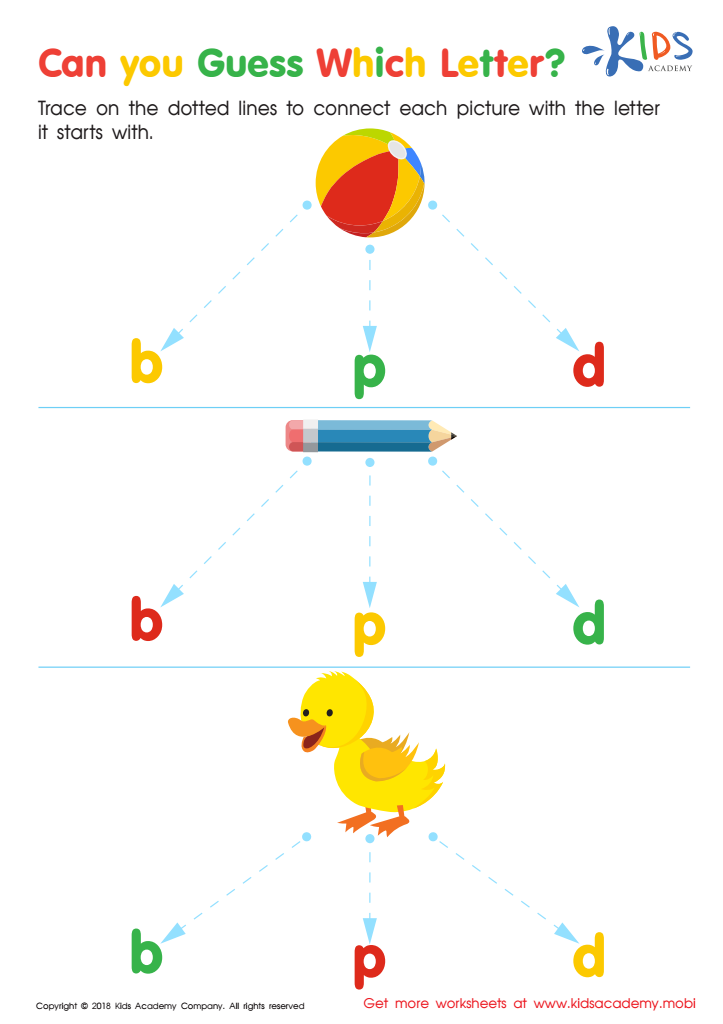Reading readiness Normal Phonics Worksheets for Ages 5-9
5 filtered results
-
From - To
Unlock the power of reading with our engaging Reading Readiness Normal Phonics Worksheets for ages 5-9! Tailored to support early learners, these worksheets provide a fun and interactive way to build phonetic understanding and promote essential literacy skills. Designed to cater to various learning styles, our activities help children recognize letters, sounds, and word patterns, laying a solid foundation for future reading success. With colorful illustrations and age-appropriate challenges, these worksheets transform reading readiness into an exciting adventure. Whether at home or in the classroom, empower your young learners to embark on their reading journey with confidence and joy!


Letter Q Sounds Worksheet


Beginning Sound «n» Worksheet


Can you Guess Which Letter? Worksheet


Phonological Awareness: Assessment 1 Worksheet


Beginning Sound D Worksheet
Reading readiness is crucial for children aged 5-9, as it lays the foundational skills for their future literacy development. Normal phonics programs enhance this readiness by teaching children the relationship between letters and sounds, essential for decoding words. When parents and teachers prioritize phonics, they are equipping children with the tools they need for successful reading, writing, and comprehension.
Understanding phonics helps children gain confidence in their abilities. This can lead to a positive attitude toward reading, which is critical for academic success. Additionally, strong reading skills are linked to improved performance across subjects. When children can read well, they can access information, complete assignments, and engage meaningfully in discussions.
Moreover, early literacy skills have lasting impacts on cognitive development and self-esteem. By investing time in reading readiness and normal phonics instruction, parents and teachers foster a love for reading that extends beyond the classroom, encouraging lifelong learning.
Lastly, children who struggle with reading early on may face challenges later, including social and emotional difficulties. Implementing phonics instruction early helps prevent these issues, ensuring every child has the opportunity to thrive academically and socially. Ultimately, understanding and supporting reading readiness is an investment in a child's future.

 Assign to My Students
Assign to My Students




















